Employee onboarding is a hot topic in the corporate world right now because recent events, such as the ongoing pandemic, have revealed just how hard it is to attract and retain top talent across all industries.
Therefore, employers are finding it more important than ever to do a good job welcoming incoming staff and making sure new employees will want to stay with them in the long term.
This article will arm you with some easy and very effective tips you can start implementing today to improve your onboarding process and make it more enjoyable than ever.
Let’s start with the most powerful step you can take to continually improve and develop your onboarding program: asking for feedback!
Ask Recent New Hires for Onboarding Feedback
We’re kicking this article off with the single best piece of advice when it comes to improving almost any work process, including employee onboarding: always ask for feedback.
As good as your onboarding program may be, it’s your employees who actually experience it firsthand, which means they’re the ones who can most accurately assess how well your onboarding program serves the people who are subjected to it.
Without collecting feedback, you may be putting your new hires through an ineffective and less than enjoyable experience without even knowing it.
It happens more than you may think.
In fact, studies have shown that an overwhelming majority of companies do a poor job of onboarding new employees.
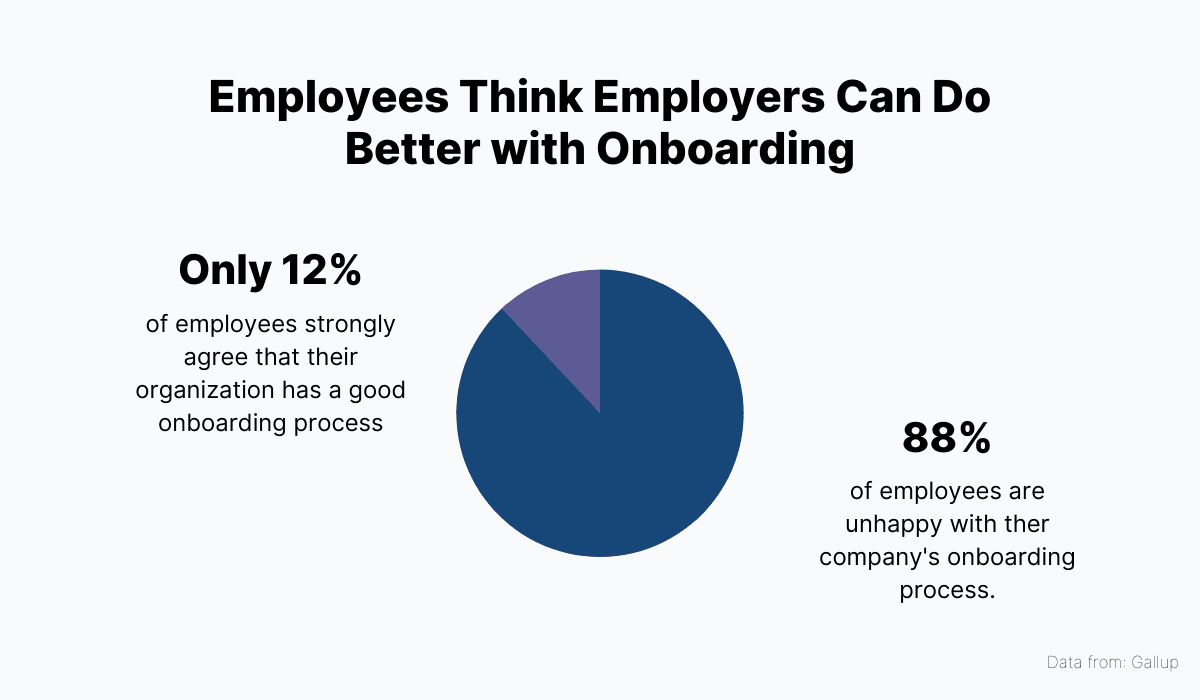
Source: Archbee.com
To avoid becoming a part of this statistic, just take the time to ask your recently hired employees a couple of questions about their experience with your onboarding program.
This can be easily done in conversation or via a convenient employee survey.
The feedback you collect should touch upon the most important aspects and goals of your onboarding process, including:
- Satisfaction with the process
- Effectiveness of onboarding
- Likelihood to stay
These elements should tell you a lot about the effectiveness of the program, how well it prepares new employees for work, as well as what needs to be improved or changed in the following iterations of the process.
In addition to that, the very act of collecting feedback sends a positive message and tells your new employees you value their opinion and that you really care for the wellbeing and professional development of your workforce.
That alone is a big step towards establishing trust and increasing your new recruit’s commitment to stay with the company.
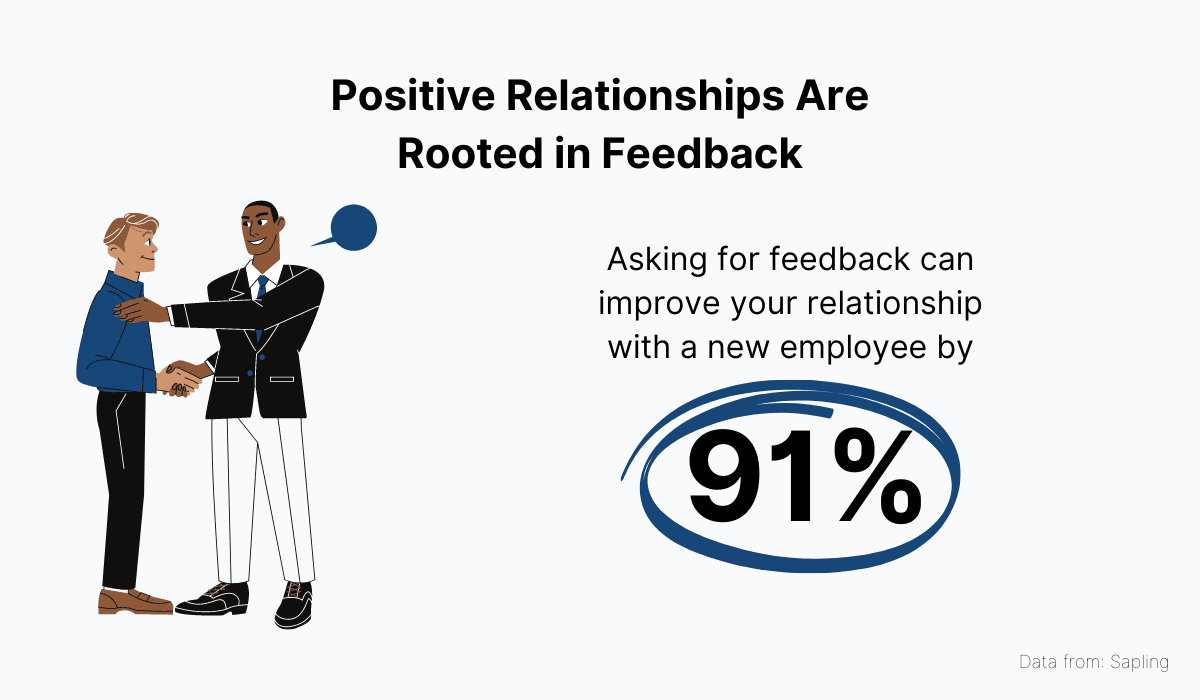
Source: Archbee.com
To sum up, feedback is a key ingredient in good employee onboarding.
Failing to collect it could put you in danger of high employee turnover and an ineffective workforce because your onboarding program isn’t helping them become high-achieving, happy members of the team.
Engage Your New Employees Before Day One
In recent times, there’s been a lot of debate on how to accelerate employee onboarding, without shortening it or sacrificing any quality.
And it’s not because employers are finding that their onboarding programs are taking longer than necessary, but rather because the modern labor market is moving faster than ever.
People are staying with companies for less time, and it’s increasingly difficult to recruit quality talent.
So, naturally, onboarding new hires at an accelerated pace, while retaining a high-quality process, is becoming a necessity.
A good solution to this problem is taking steps to engage and support recruits even before they start working for you, during the so-called pre-boarding process.
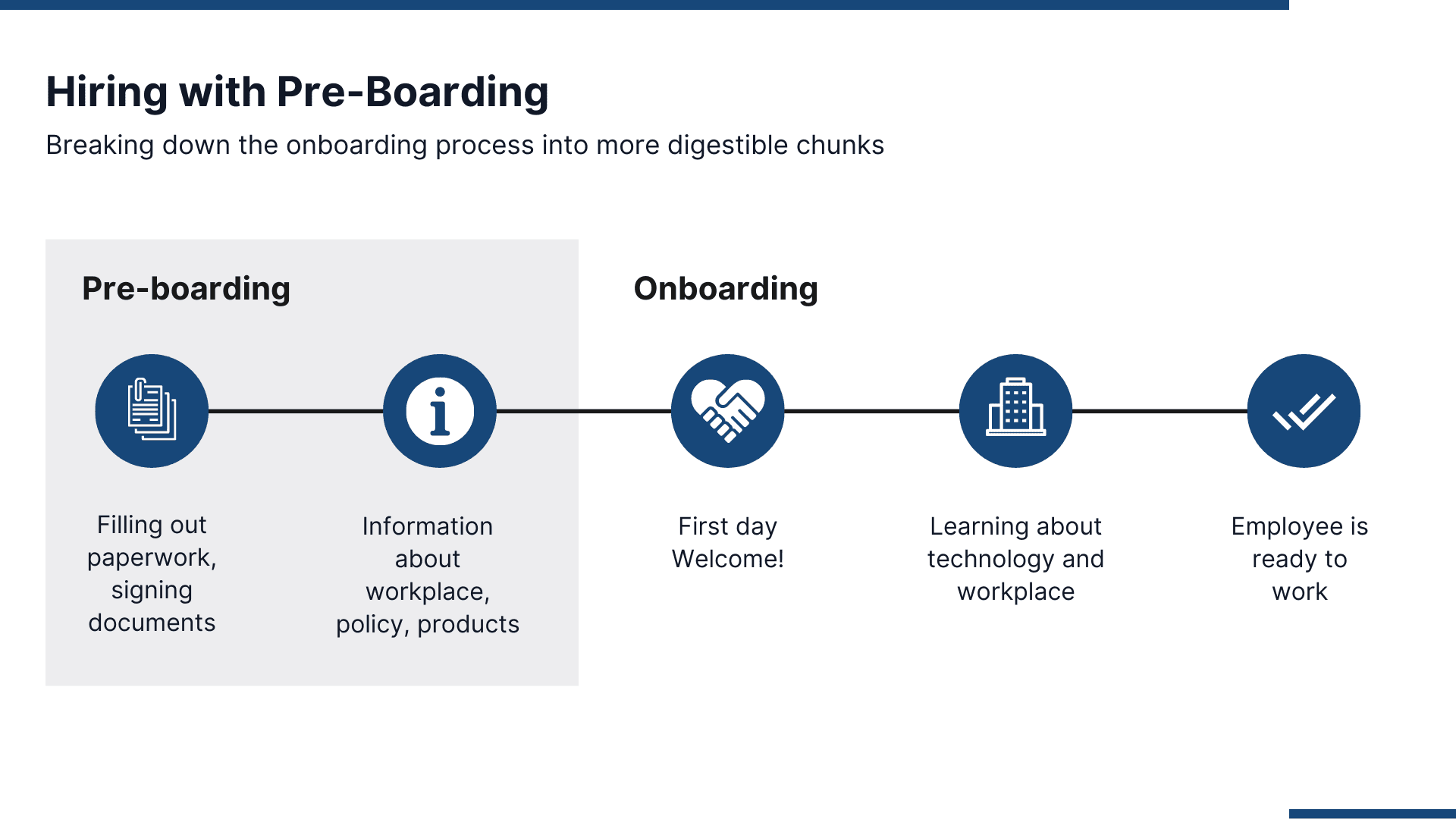
Source: Archbee.com
The pre-boarding process is your chance to get some paperwork done, such as signing contracts and filling out employment forms.
That way, your new employee is ready to tackle their first tasks once they finally arrive at the office on their first day.
More importantly, pre-boarding is a great time to get the candidate excited about joining your organization by slowly getting them immersed in company culture.
By doing this, you’re not only handling an important part of onboarding even before the recruit starts working, but also helping the candidate validate their decision to come work for you.
That’s because a large number of the candidates who accept a job offer end up changing their minds before starting their new job.
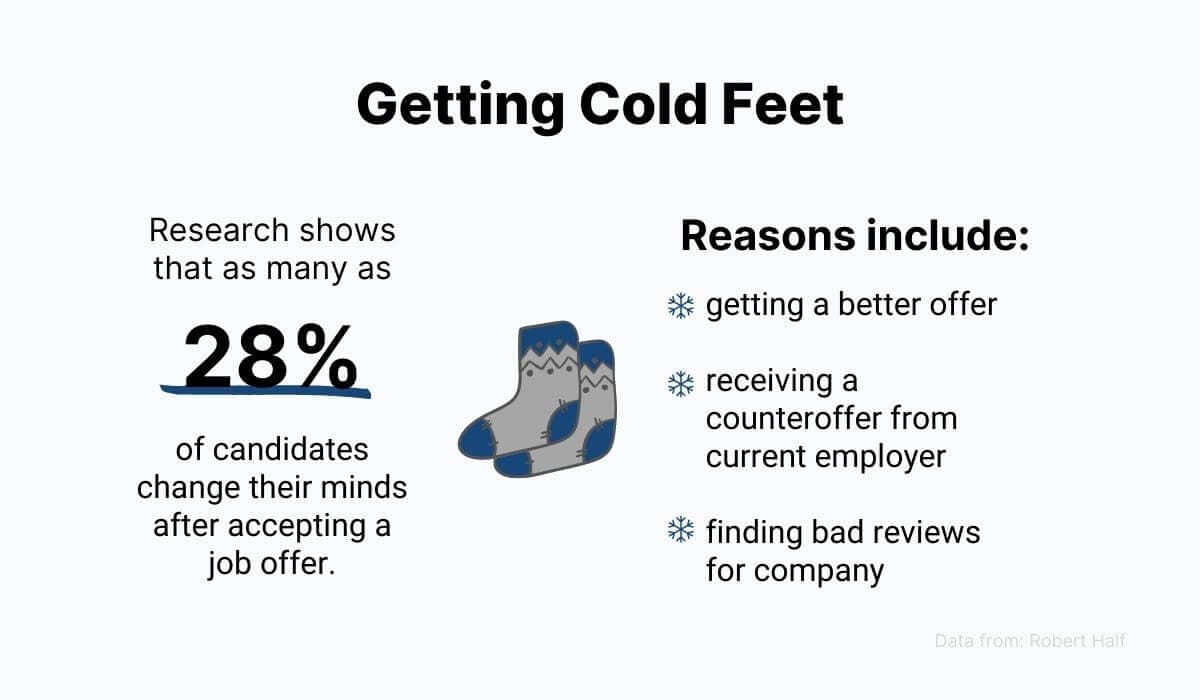
Source: Archbee.com
But if you manage to convince the candidate that they will be joining a great company with a stellar culture, they’re much more likely to stay with their decision to come work for you.
The best thing about this is that you don’t have to go out of your way to explain what working for you is like.
For example, you can just share your social media to show, rather than tell, the candidate what they can expect.
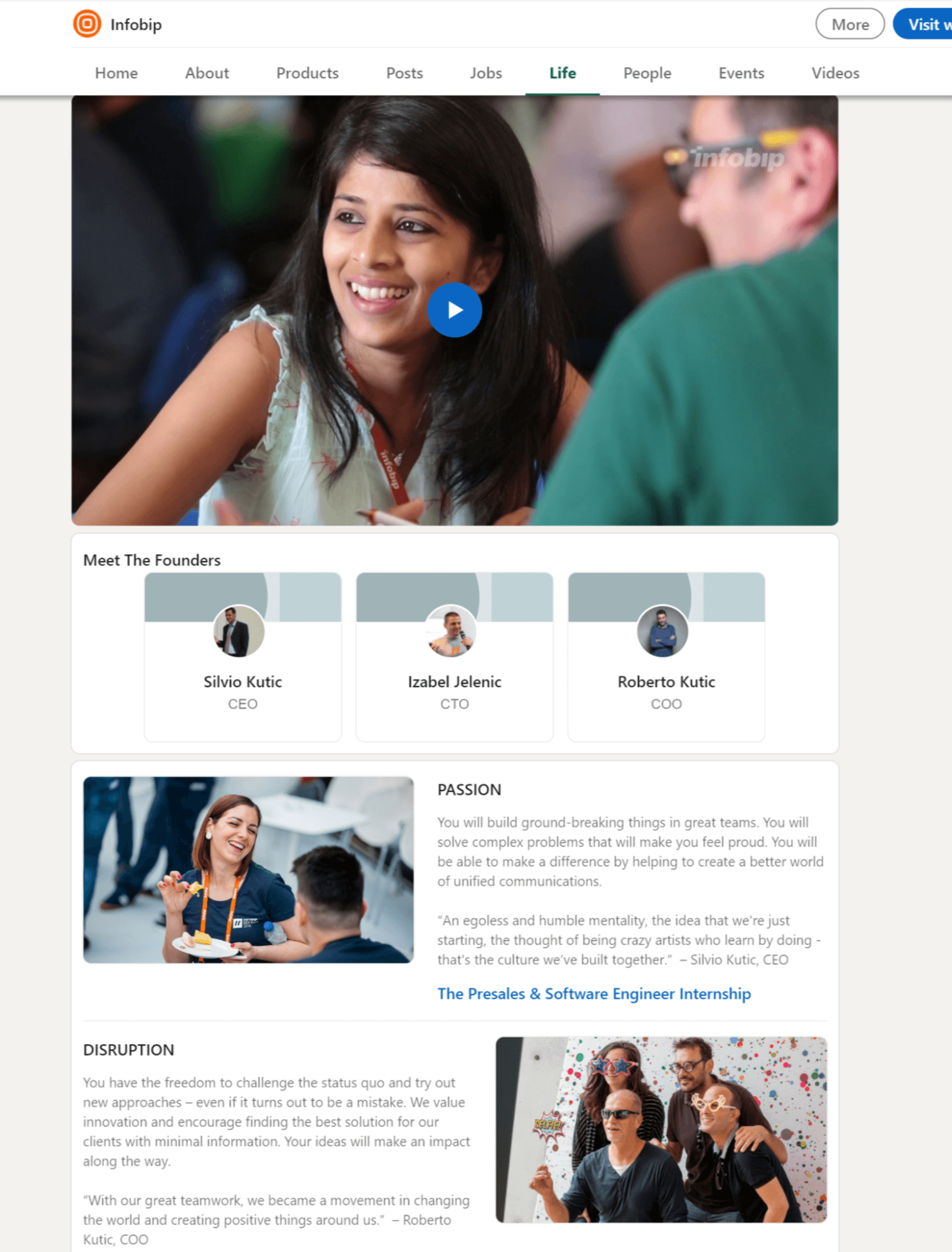
Source: LinkedIn
The business communication platform Infobip does this pretty well. Their “Life” page on LinkedIn is full of information about the company’s values and culture.
It’s very successful at conveying what working for the company really feels like.
To get into a little more detail about the unique character of your company, you could also send the candidate your employee handbook.
That’s the document that contains your company policy, code of conduct, and other things the new recruit will definitely want to know about.
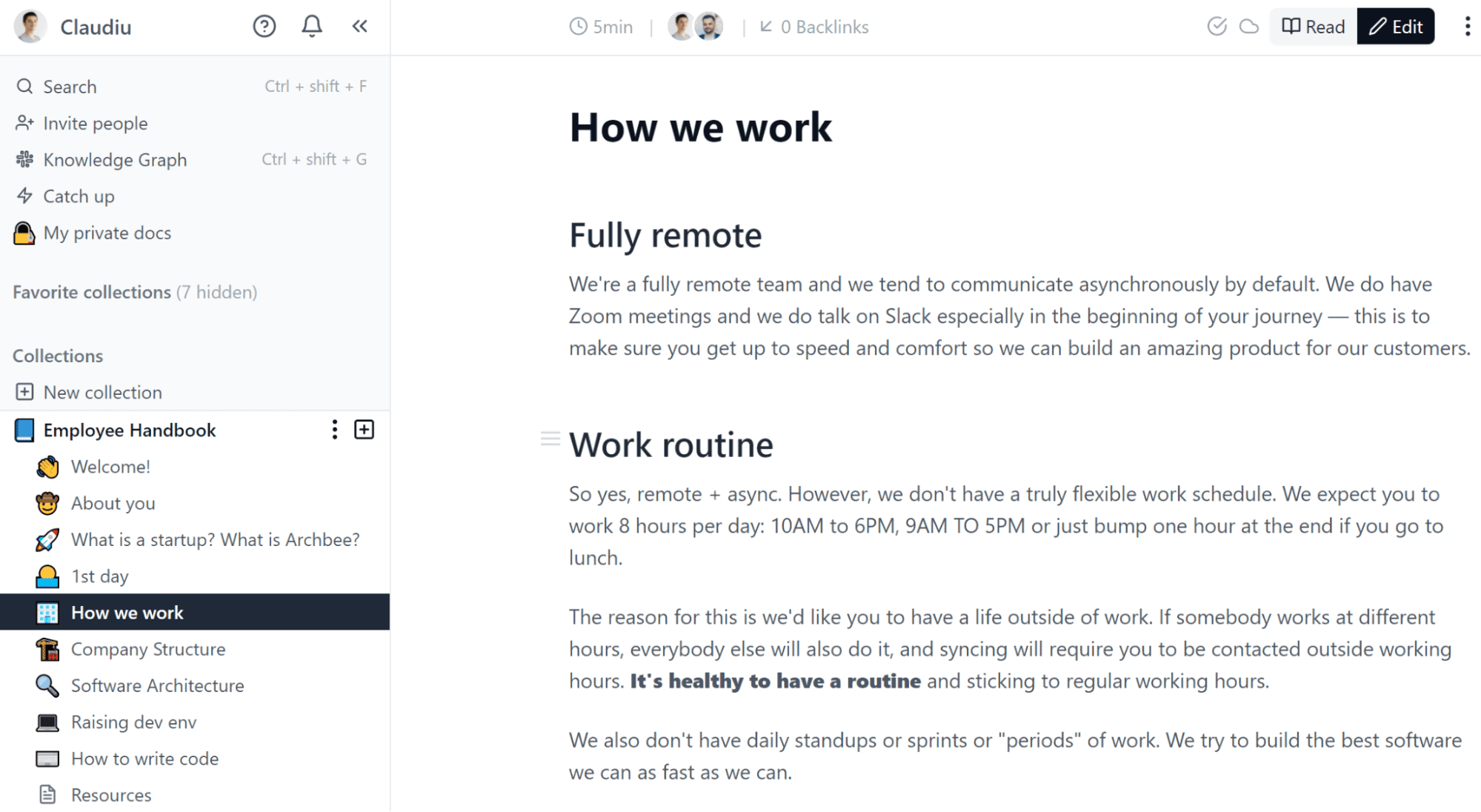
Source: Archbee.com
If your employee handbook is in digital format as a part of your knowledge base, like the one you can see above, which was created using Archbee.
You can just link it to your new recruit and give them the login information. It’s really as easy as that.
Remember, there’s no reason to start connecting with your new employee as late as their first day at the office.
You can start engaging them as soon as they accept your offer to onboard your new employees at an accelerated rate.
Provide Structure to Their First Weeks
One of the biggest mistakes you can make while onboarding new employees is failing to provide them with enough structure for the first few weeks.
Think about it: a new hire just can’t automatically know what they’re supposed to be doing. They need to be introduced to ongoing projects and work processes to be able to work independently.
Therefore, failing to give the employee’s first few weeks enough structure will undoubtedly result in them wandering aimlessly around the office and feeling useless and isolated from the rest of the team.
This might not seem like a big deal but it can actually have disastrous consequences for your relationship with the employee.
That’s because, in such circumstances, employees will eventually start to feel disengaged at work which is a major cause of employee turnover.
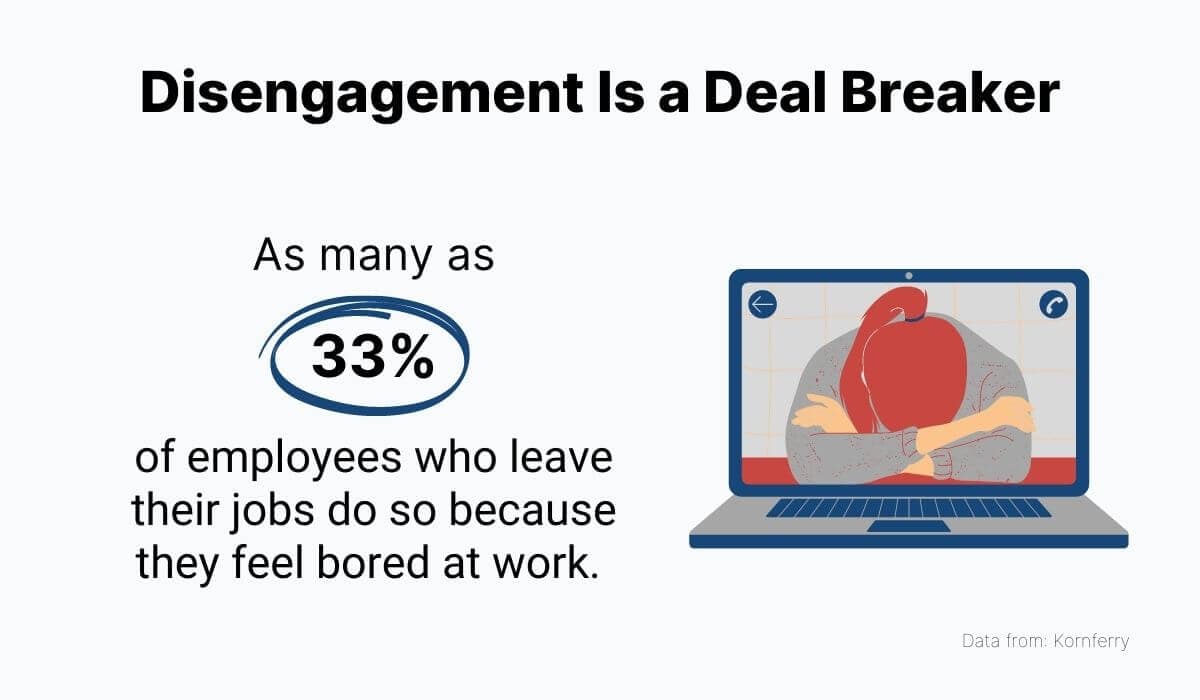
Source: Archbee.com
So keep your new employees busy and make them feel like they belong at your company by coming up with a tight schedule for their first few weeks.
And here are some tips on what to include on your itinerary to make it as efficient as possible.
On day one, get some introductions out of the way. Have the new employee meet their manager and coworkers so they can start building lasting connections at the company.
Also, don’t forget to give them a tour of the office and get them settled in at their workstation.
You can devote day two to getting acquainted with the company systems, like your HR platform, the tools you’re using for communication and project management, and so on.
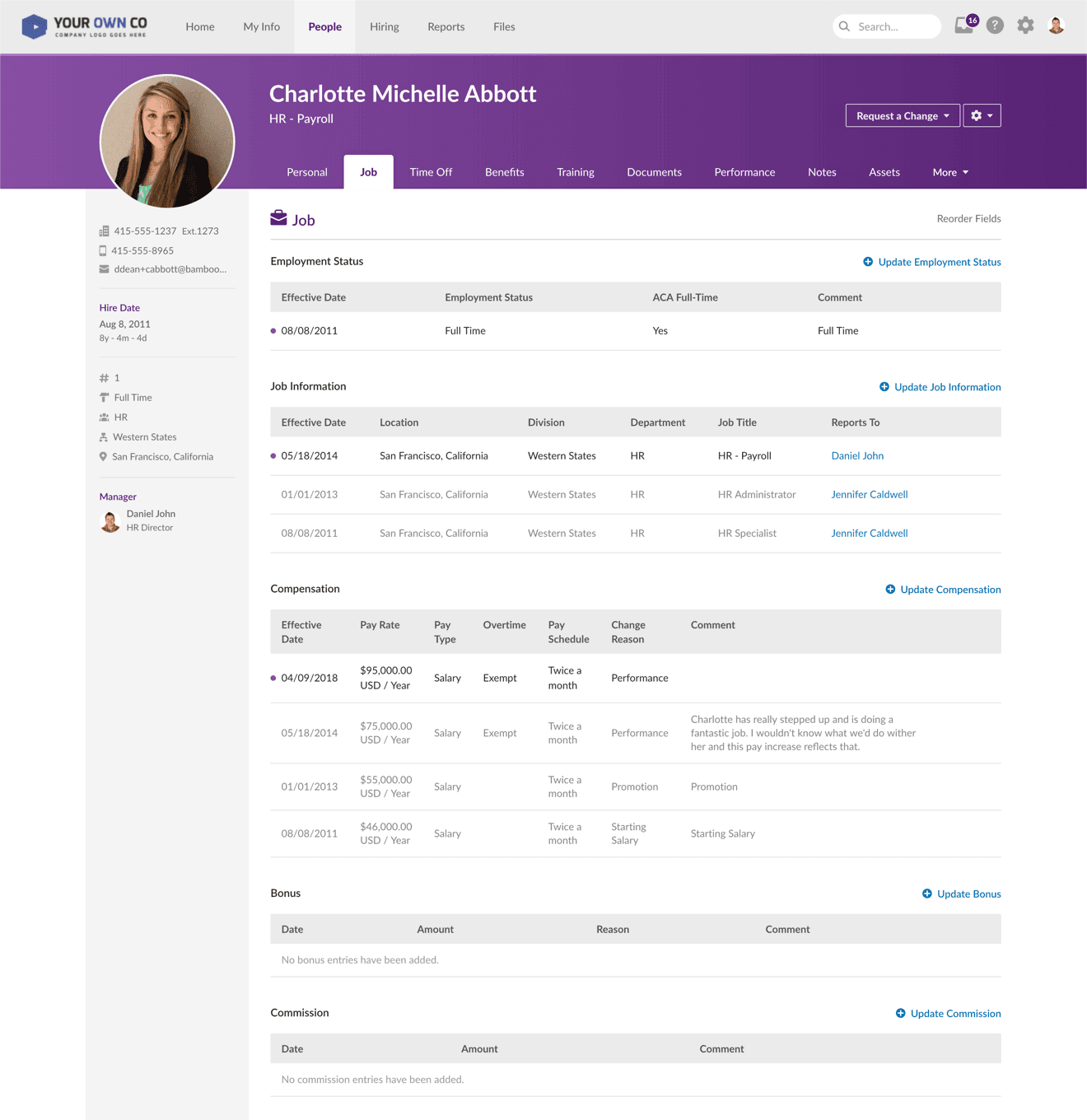
Source: BambooHR
Make sure they have their profiles set up and that they can log into their email and other accounts.
Once the middle of the week rolls around, it might be a good time to set some goals for the new employee. So have them meet with their supervisor and discuss how their day-to-day life will look in the short and long term.
This is also when you can start introducing them to their first project so they can begin accomplishing those same goals.
The last two days can be spent working on assignments and group meetings with their team to discuss the details of the project.
As the week draws to a close, don’t forget to exchange some feedback about their progress and, of course, take some time to celebrate the arrival of a new team member with a small event (pizza is always a good way to go, we’re just saying.)
With a great week behind them, your new employee will be even more committed to doing well at their new job, with nothing standing in their way towards success.
Include All Relevant Parties in the Process
A bad practice we’re seeing at a lot of companies is resting the entire responsibility of onboarding new employees squarely on the shoulders of the HR department.
This is the wrong way to go because HR, while instrumental in helping the new hire settle in, can’t do much to effectively involve incoming employees in ongoing projects or explain the dynamics of the department they will be joining.
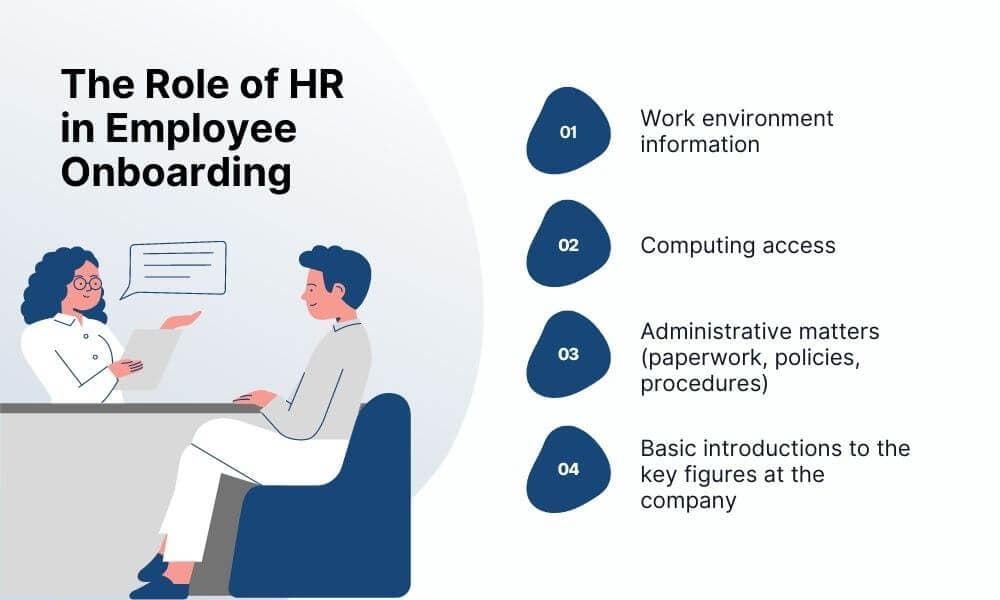
Source: Archbee.com
A truly effective onboarding program is actually a joint effort between HR, the employee’s supervisors, and coworkers, as well as other figures from the company.
All of these people have skills, expertise, and connections that they can transfer to the new recruit and help them become fully operational within the company.
Following this logic, it might be worth your time to consider the best owners of the onboarding process at your company.
These should be the people who exhibit a deep understanding of the key elements that make your company unique and successful.
If you’re unsure where to begin, you can use Dr. Tayla N. Bauer’s division of onboarding into four aspects, or the four Cs of onboarding:
- Compliance: explaining the rules of the company, such as policy, code of conduct, and legal regulations.
- Clarification: making sure the employee knows the details and intricacies of their role and job.
- Culture: instilling a sense of company norms and aligning their values with the values of the company.
- Connection: helping them build real and lasting relationships that will make working at the company more comfortable and productive.
For example, a figure from the HR department might be best suited to handle the responsibility of compliance, and a supervisor or manager could be a good choice to provide clarification on the role.
As for culture and connection, consider dividing these responsibilities between a couple of employees who have been with the company for a good while.
They might be called the new recruit’s onboarding buddies.
Remember, onboarding is too important and too complex of a process to be carried out by just one person or a single department. It works far better when it’s a joint effort of the entire organization.
Don’t Be Vague About Your Expectations
The onboarding program shouldn’t be aimless. Much to the contrary, it works best when employees have a clear understanding of what is expected of them and what goals they should be accomplishing.
This should make sense if you think about it.
Without a set of goals and with no expectations to gauge their performance against, onboarding would take much longer.
Neither the employee nor their handlers would have a way of knowing when onboarding is over and whether the new hires were successful in completing it.
It’s, therefore, quite disappointing to see that more than half of the companies out there still aren’t getting this right.
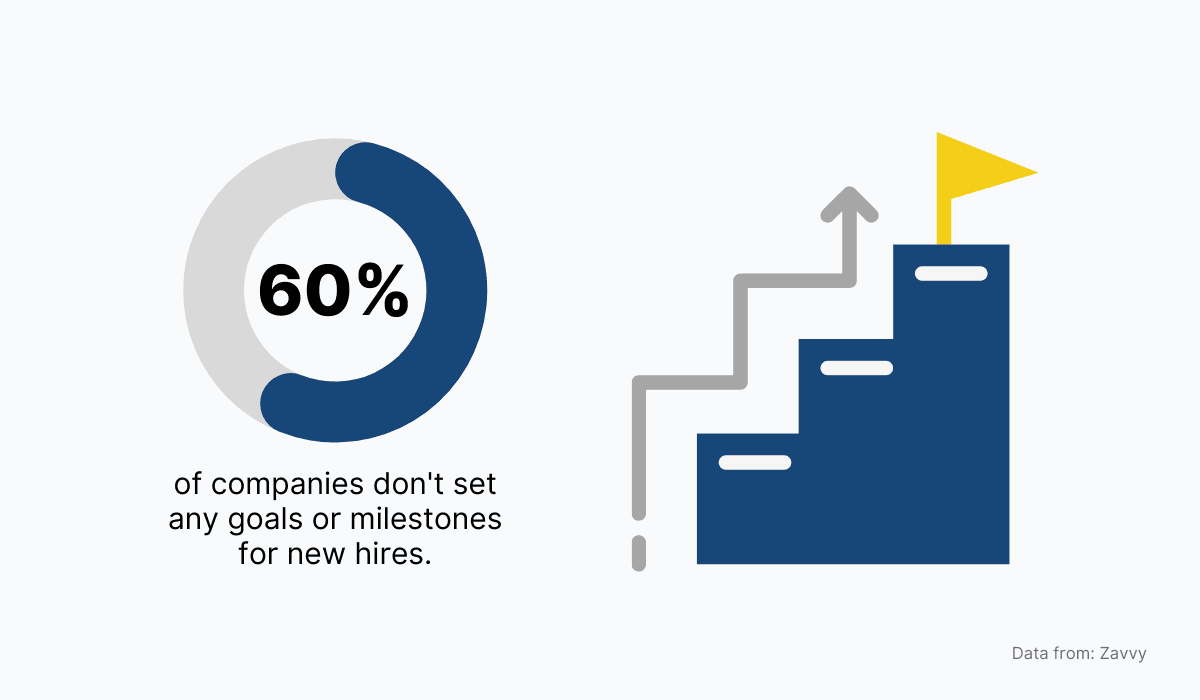
Source: Archbee.com
The thing about goals and expectations is that they only work if they’re timely.
If managers only start noticing their employees after they’ve been onboarded and choose to define expectations so late, their jobs are made much more difficult.
This is because now they also have to work hard to correct undesirable habits and behaviors, as well as change the employee’s first impression of the company.
And as you probably know, lessons learned are not easily forgotten. So the responsible and smart thing to do is to set expectations early on, as soon as the onboarding starts.
The best way to do that is through open and honest conversation between manager and employee.
So when the new employee arrives, schedule some time for a one-on-one meeting to set some clear goals and expectations.
This is one of the best things you can do to kick off a trusting and productive relationship that will last for a long time. Even employees themselves are saying that they want managers to be more involved in the onboarding process.
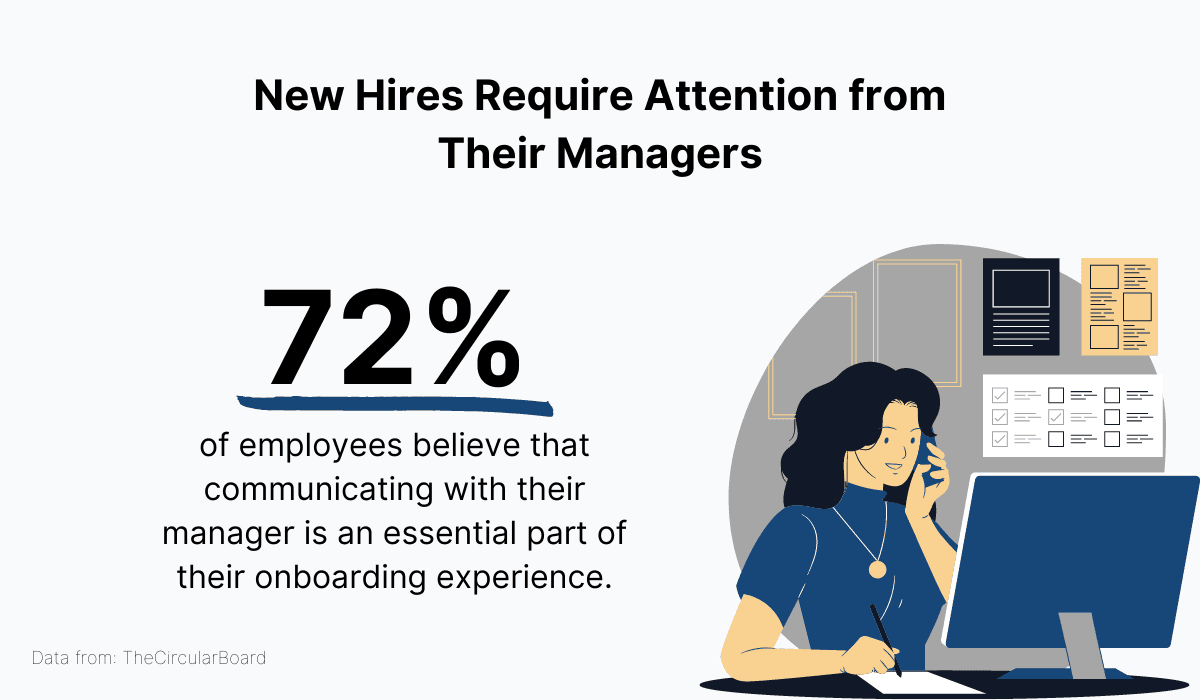
Source: Archbee.com
As for the expectations you’re setting, make sure they’re achievable and in line with your values, as well as the employee’s job description.
And most importantly, don’t forget to touch base regularly to discuss the employee’s progress and next steps.
Goals and expectations are the foundation of any healthy working relationship, so be sure to communicate them as early as possible for a healthy and efficient onboarding process.
Don't Forget to Have Fun
We’re finishing this list on a positive note.
Many companies get so caught up in paperwork, processes, and policies that they forget the most important rule of onboarding: make it fun and enjoyable for everyone involved.
Unfortunately, this is another aspect of onboarding many companies out there simply neglect.
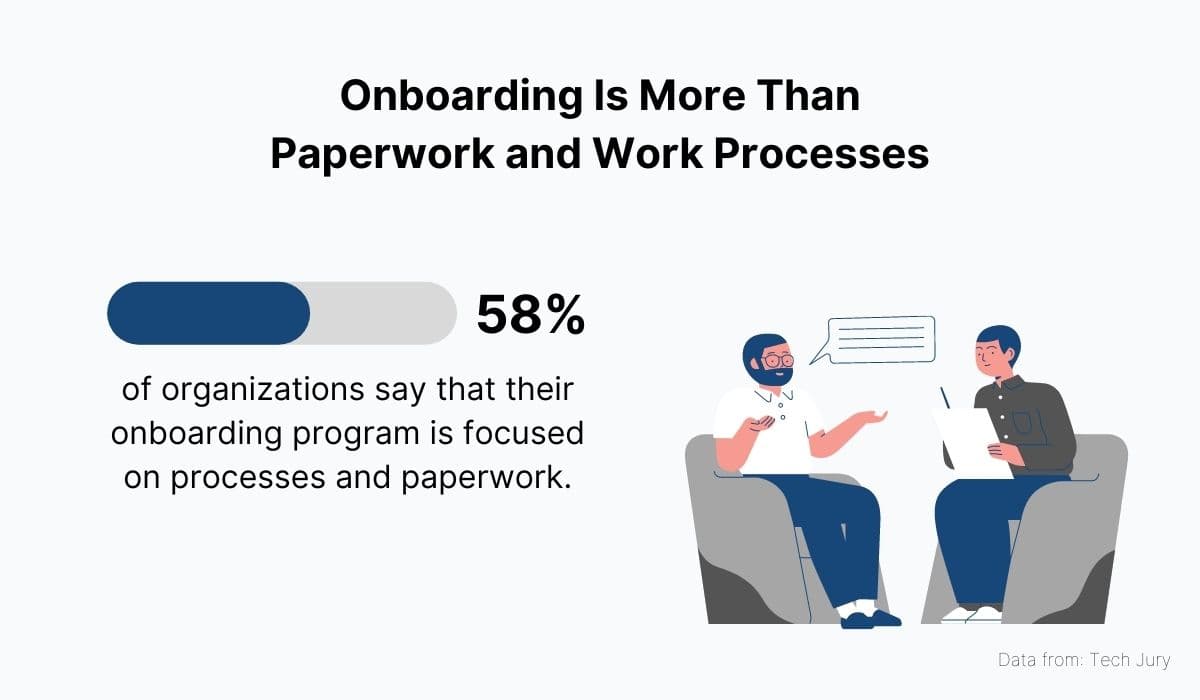
Source: Archbee.com
This is a real shame because it might be leaving your incoming staff with the impression that working for the company is boring and too serious, increasing the risk of a disengaged workforce quitting as soon as a better opportunity arises.
On the other hand, throwing some fun activities in the mix will go a long way to make onboarding memorable and cement the new recruit’s commitment to your company even after the onboarding is over.
In spite of the statistics implying that onboarding at a lot of companies is quite dry, there are some organizations that are working hard to make onboarding a fun experience.
For example, at the Waldorf Astoria Resort, Wailea, Hawaii, new employees sometimes have trouble memorizing the layout of the huge hotel complex.
So on their first day, they’re given a big tour of the facilities led by the hotel’s Hawaiian cultural advisor.

Source: Irei
When they come to work on the second day, they get to participate in a fun scavenger hunt that spans over the entire complex and includes ten riddles about the hotel’s key locations.
Turning the task into a game like this is an excellent way to make sure the lessons you’re teaching stay with the new hire.
Just imagine how much more effective this practice is compared to merely giving the new employee a map and expecting them to learn the layout by heart.
Plus, this gives new employees the opportunity to socialize and work together, paving the way for great collaboration and lasting relationships further down the line.
There are many examples like the one from Waldorf Astoria.
So don’t hesitate to seek them out and get inspired to make your onboarding program a fun experience for incoming staff who will definitely thank you with their loyalty and a renewed desire to do well at work.
Conclusion
To sum up this article, we want to let you know that there is a lot you can do to improve your employee onboarding experience.
You can make it an efficient, productive, and fun process that will help you prepare your employees for the challenges of work and keep them around for a very long time.
Just remember to keep the lines of communication open as much as you can.
Also, put in some more effort into enriching their experience with good structure and plenty of activities that will keep them engaged during the beginning of your relationship.
Remember, regular onboarding is all about paperwork and processes, but excellent onboarding adds that human touch to the mix that makes all the difference in the world.
FAQ
Frequently Asked Questions
Because it tells you exactly what to fix and what to keep. New-hire feedback reveals what’s clear vs. confusing, where training or tools fall short, and whether people feel ready to contribute.
What it helps you measure:
- Satisfaction and clarity (first impressions, role understanding)
- Time to productivity (how quickly they can do real work)
- Intent to stay (early commitment and sentiment)
How to do it well:
- When to ask: end of week 1, day 30, day 60–90
- How to ask: 3–5 question pulse surveys (anonymous is fine), short 1:1 check-ins, open-text prompts
- What to ask: "What surprised you?" "What felt unclear?" "What should we stop, start, continue?"
- Close the loop: share a "You said / We did" summary, assign owners and deadlines to improvements, track trends over time
Tips:
- Keep it lightweight to avoid survey fatigue
- Ensure psychological safety and confidentiality
- Act quickly on quick wins to build trust
